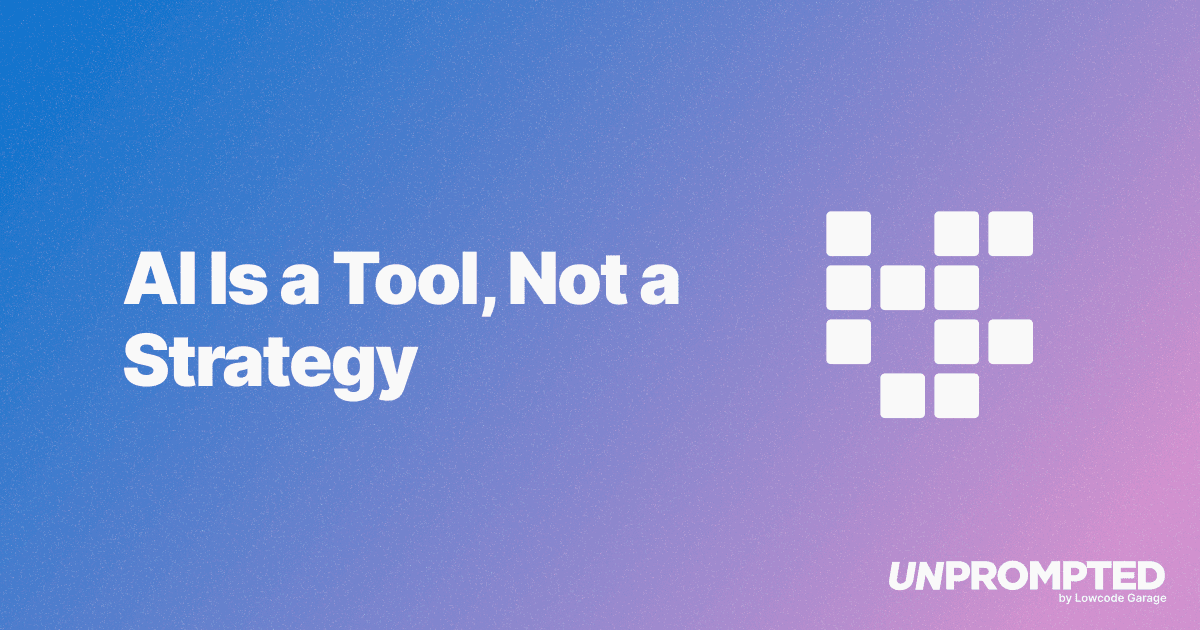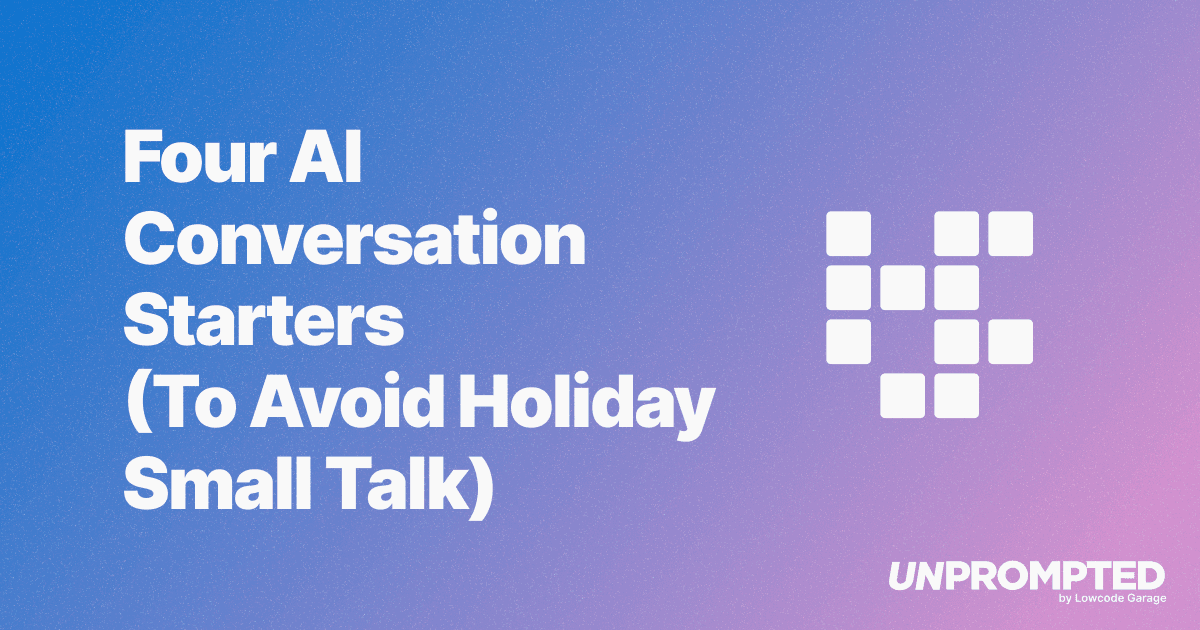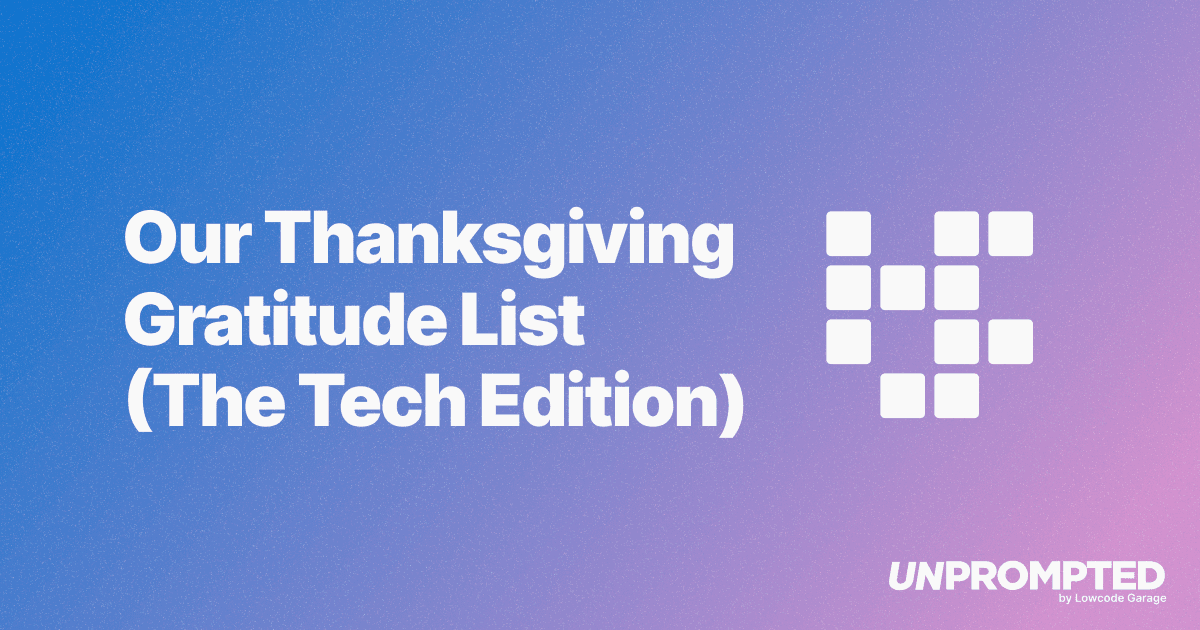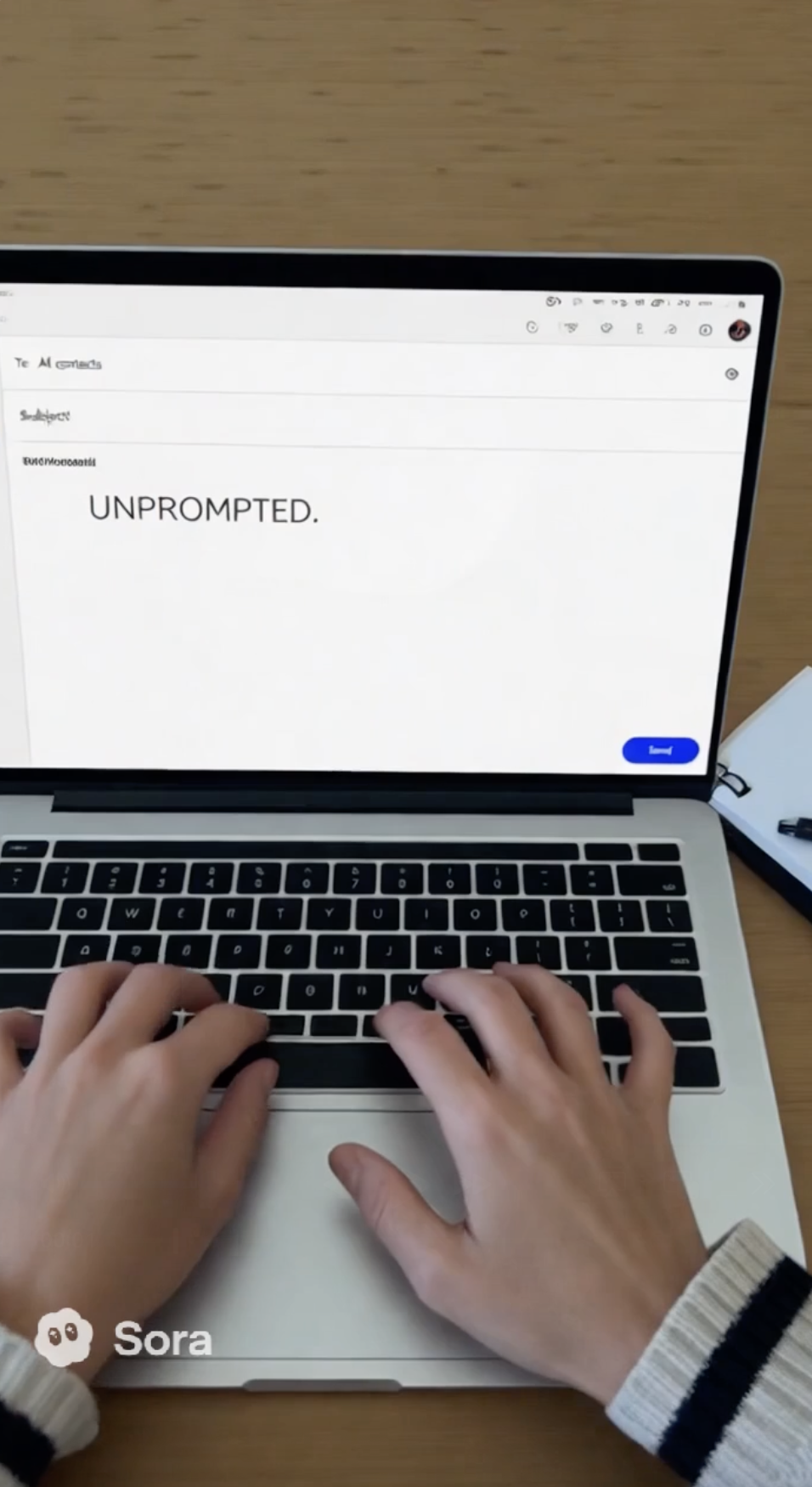The New AI Marketing Machine
How AI is reshaping the marketing landscape and where traditional specialists fit in.
We've had a few unprompted requests about AI marketing this week — so we figured it's time to talk about it.
This week we're covering:
- Why the marketing industry has changed.
- How you should think about using AI in your marketing efforts.
And with the recent launch of OpenAI's Sora app (which we had some fun experimenting with this week as you can see below… and it's absolutely wild), now's the perfect time to figure out where AI should (and shouldn't) fit into your marketing strategy.
Our dream come true: a stadium full of Unprompted subscribers. Check out the video on YouTube.
The Digital Marketing Machine - A 2 Minute Rant
We've spent a lot of time working on marketing campaigns — both here at Lowcode Garage and in our previous companies. And we're not afraid to say it: the traditional marketing industry is… infuriating.
Over the past two decades, marketing evolved from TV spots and billboards into a hyper-specialized web of digital content production, a machine designed to capture attention and convert it into sales.
And somewhere along the way, it turned into a labyrinth of specialists.
Need a campaign? You'll be referred to the paid team, then the social team, then the SEO team, then the analytics team.
Each specialist will insist that you must invest in — and actively operate — every component of the marketing machine, or else their specialized efforts won't succeed. And, of course, you wouldn't see any tangible results from their work for another 6 to 12 months.
But lucky for us, the past two years of AI have completely rewritten the playbook.
Marketing 101: The Old Playbook
Traditionally, marketers divided their world into four pillars:
- Paid Media – When you pay to put your brand in front of people who haven't found you yet: ads, sponsored posts, influencer deals, search keywords.
- Earned Media – When others talk about you: press coverage, social shoutouts, testimonials.
- Owned Media – What you control: your website, blog, newsletter, or social accounts.
- Community – The people around you: your fans, groups, and events that bring them together.
Pre-AI, each of these required a dedicated specialist (or even a full team) to execute properly.
For example:
- Websites needed engineers and keyword/ SEO specialists, graphic designers, UI designers, copywriters.
- Video content required actors, scriptwriters, and editors.
- Paid ads demanded all of the above plus data engineers to track and analyze metrics.
You can start to imagine how much time, organization, and money traditional marketing required (not to mention the headaches).
A Welcome Change: The 4 New Pillars of Marketing in the Age of AI
While the 4 pillars of marketing (paid, earned, owned, and community) are definitely still critical components of any brand or company's marketing success, the ways we execute them are evolving rapidly.
At Lowcode Garage, we've been thinking about how new AI tools can support marketing efforts across these traditional channels, which we think fits into four new pillars:
- Content Creation – new AI tools can now handle the heavy lifting in visual and written production
- Live Operations – AI is making customer support and 24/7 brand presence scalable across live social channels and community management
- Internal Operations – teams are now streamlining all of the tedious behind-the-scenes work with AI products and development tools
- Performance Analytics – LLMs are really good at parsing data and displaying insights, especially with typical marketing campaign data
The next time you need to do marketing, step back and think about whether you can use a new AI tool rather than hiring another marketing specialist. Because the chances are that there may be a better way to get the job done.
PSA: Please Don't Copy and Paste ChatGPT Copy for Social Posts!!!!
We know we've gushed about AI tools, but please, we beg you. If you want to use AI for marketing, do not just copy and paste whatever ChatGPT gives you.
It may seem like it sounds good. But it's AI slop that you can smell from a mile away.
So do yourself a favor, and spend 2 minutes thinking for yourself and either:
- Write posts yourself (yes, people still do that)
- Use ChatGPT as a brainstorming partner and make sure that the thoughts are yours
We've actually started making disclaimers in our own posts, that everything was written 100% without AI, and that all thoughts and opinions are our own.
People seemed to like that approach (and feel free to like the post too if you feel inclined)!
.png)
This was a lot… Can I get this to go?
We're so glad you asked. Yes, we've created a handy one-pager that summarizes these four new frameworks and includes AI tools for each category, just for you!
If you find this information helpful, please share it with your colleagues and friends who could also benefit from this new approach to marketing.
And of course, we're just a phone call away if you want to discuss any of these ideas with us.
Frequently Asked Questions
Continue Reading

AI Is a Tool, Not a Strategy
Henry Kravis reminds us that AI is a productivity tool, not a strategy. Strong management, cultural fit, and operational fundamentals still determine whether businesses succeed or fail.

Four AI Conversation Starters (To Avoid Holiday Small Talk)
Four timely AI conversation starters covering federal vs state AI regulation, Opus 4.5 capabilities, physical AI in construction, and Michael Burry's bet against Nvidia—perfect for surviving holiday small talk.

Our Thanksgiving Gratitude List (The Tech Edition)
Discover the AI tools transforming how we build products at Lowcode Garage. From publishing content with Claude Desktop to building prototypes in weeks instead of quarters, here's our Thanksgiving gratitude list for the tech that makes it all possible.
